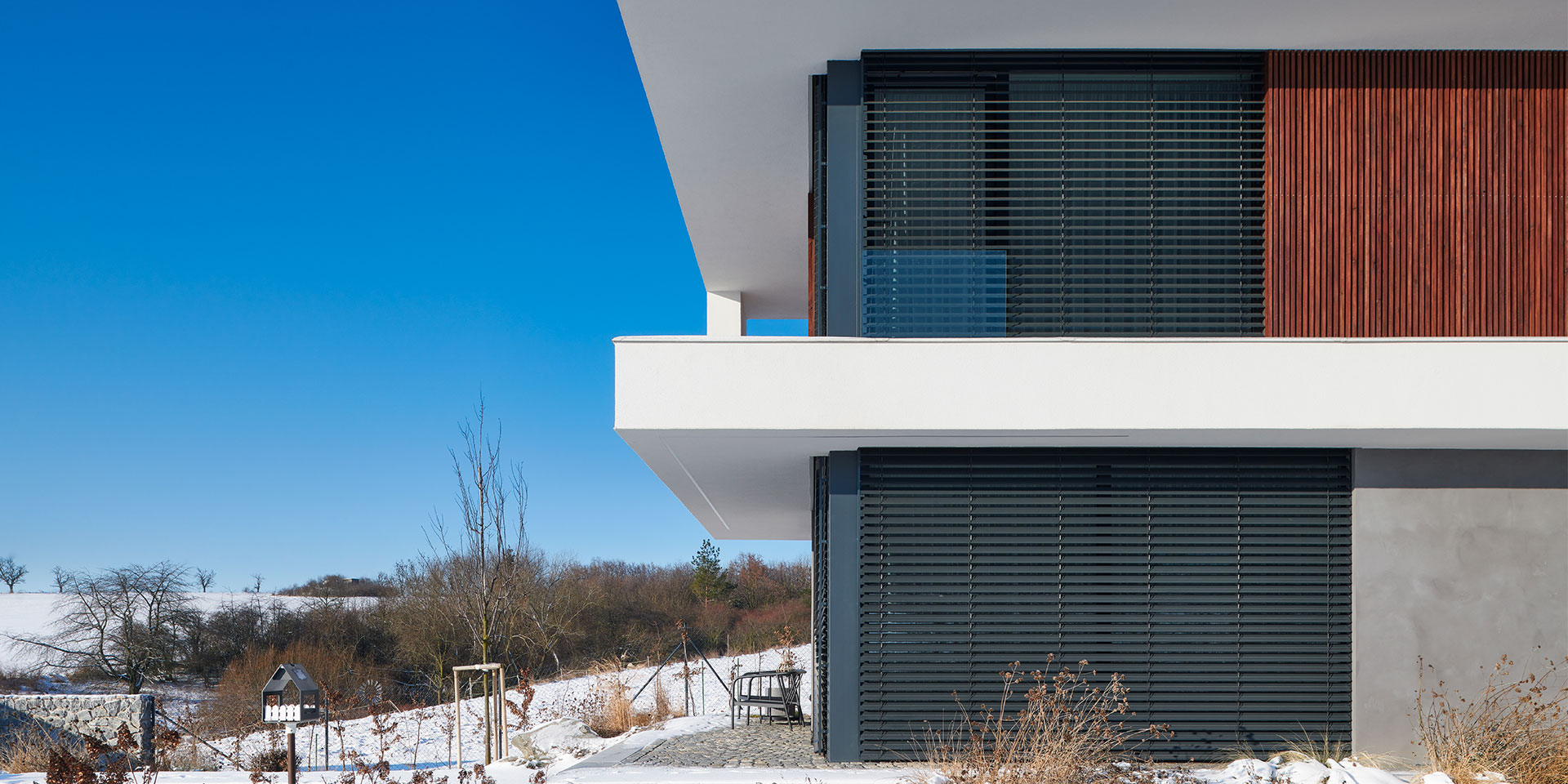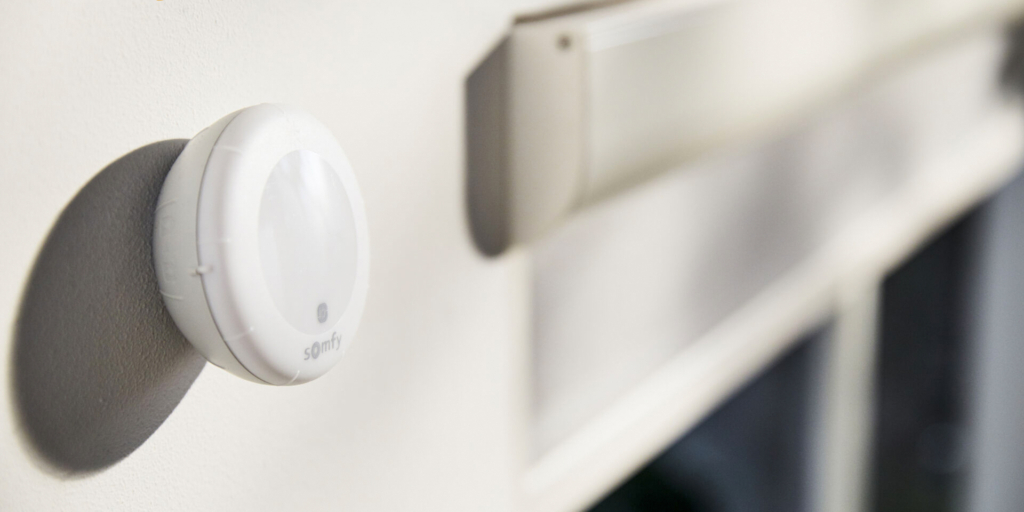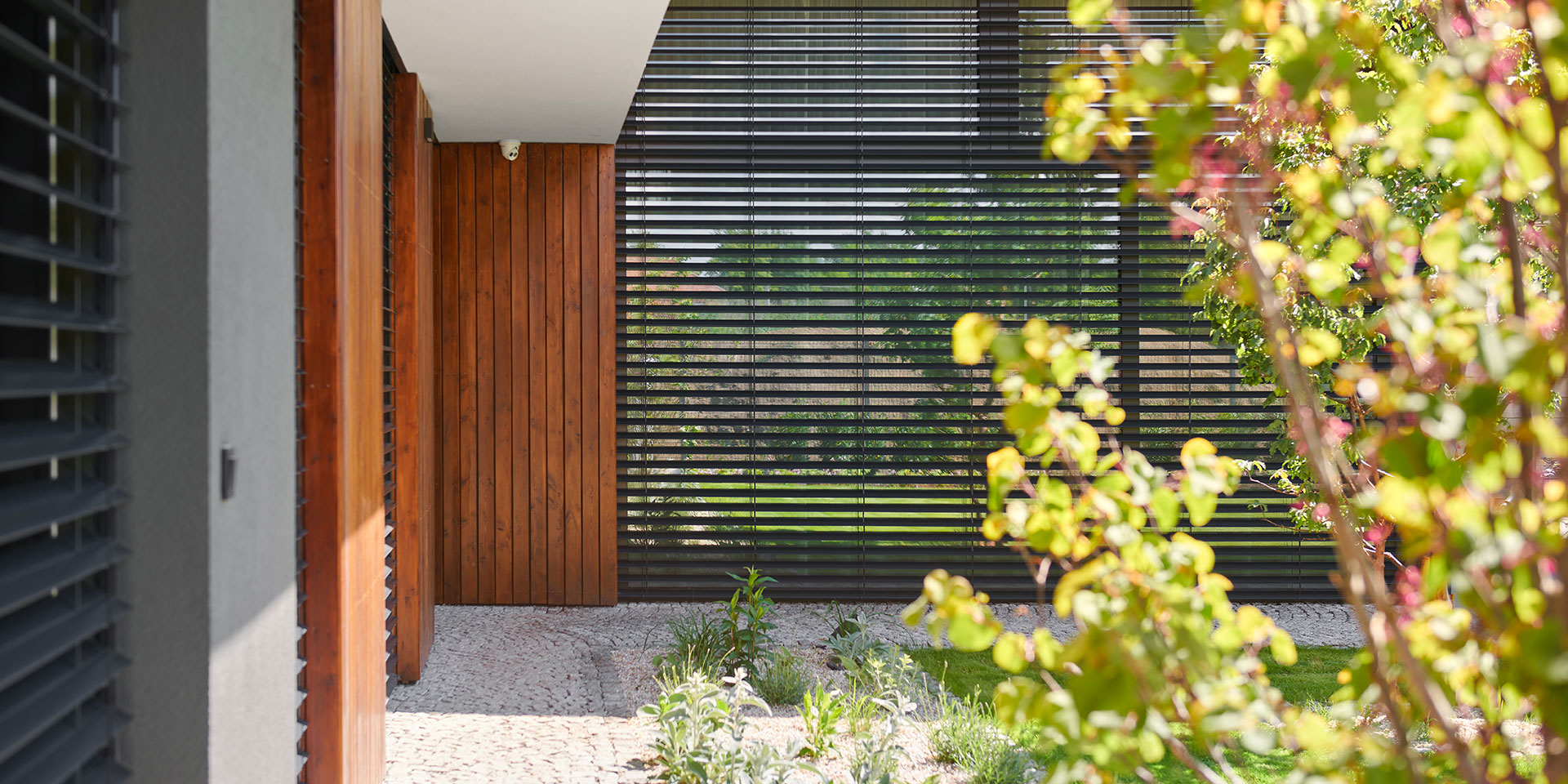Which sensors can be connected to outdoor shading
The sensors that can be fitted to outdoor shading are divided into safety and comfort sensors. Safety sensors are wind sensors, especially for external blinds. Comfort sensors include temperature, solar and rain sensors. More information was revealed by Jan Hrnčíř from Somfy, a company that manufactures sensors.

All the sensors mentioned in this article work on the same principle for external blinds, aluminium and screen roller shutters and awnings. They are small components up to 20 cm in size and are divided into two basic categories – safety and comfort.
Safety sensors
They ensure safe operation of the outdoor shading and protect it from damage. As safety sensors are supplied wind sensors.
How do wind sensors work?
We set a wind speed limit at the factory where we have tested that the blinds will not be damaged and will stay safe. During installation, the installer sets the sensor to this wind speed. Once the sensor has measured this wind speed, it will then instruct the motor to pull the blinds to the top end position and conceal them under the cover sheet or in the box.
Comfort sensors
These only serve to increase customer convenience. There are three types of comfort sensors:
1. Temperature sensor
It measures the air temperature. The user sets a threshold that determines when the shading should be pulled up (to warm the room) or pulled down (to stop overheating). You can use the sensor to measure the temperature outside or inside. For example, if you buy a wireless sensor, you can leave it outside in summer and move it indoors in winter.
2. Solar sensor
It measures the intensity of sunlight (brightness). Compared to a temperature sensor, it can react faster to the movement of the sun and clouds. It is typically used during sunset and sunrise. As soon as the sunlight drops below 100 lux in the evening, for example, the sensor instructs the motor to close the blinds or roller shutters. And in the morning, at sunrise, it will open them again in the same way.
3. Rain sensor
It’s the only one you can’t buy alone. It’s always linked to a wind sensor. In the past, sensors in this combination were widely used as frost protection (as soon as the temperature dropped below 2 °C and it rained, the shade was pulled into the box), but today’s smart motors already have integrated frost control of the slats, so rain sensors which recongnize snowfall, for blinds and roller shutters are partly losing their importance. However, rain sensors are now used for awnings, which are more exposed to rain on terraces and balconies.
How do the sensors connect to the shading?
The sensors communicate with the motors wirelessly using a radio signal — so you can only use them with motors that can receive a radio signal (which means all wireless motors from the NEVA range). You can only connect Somfy sensors with Somfy motors — other manufacturers do the same. So always check compatibility with your shading supplier.
There is no limit to the number of blinds or roller shutters that can be connected to one sensor. The sensor simply sends a signal and the motors receive it. Most installers will automatically set the motors for all windows the same way.
“I 100% recommend wind sensors for external blinds. The rest depends on your situation and experience with the temperature in your house. But you can always buy them later on,” says Jan Hrnčíř from Somfy.
What about the sensor hierarchy?
If you buy multiple sensors, priority is always given to safety, i.e. wind sensors. The moment the sensor detects a gust of wind, the shading is pulled into the box and cannot come down while the wind is blowing. At this point, the motors do not respond to instructions from other sensors, and will not even obey the user if he tries to pull the shading down using the controller.
Comfort sensors are equal to each other, and as soon as they detect a change in the weather, they immediately instruct the motor. In theory, this could lead to clashing if, for example, the sky clouds over (= instructing the solar sensor to pull up the blinds) at the same time as the temperature exceeds a certain threshold (= instructing the temperature sensor to pull down the blinds). However, in practice this does not happen because most users get a smart home control system together with the sensors, in which they set conditions and scenarios that are not mutually exclusive.

Where to place the sensors so they can measure reliably
Sensors can be wired or wireless (battery operated). Wired sensors require construction preparation, so they need to be planned for early on. The cable is routed through the wall and the sensor is anchored to the façade by means of wall plugs:
- solar sensors on the south or south-west side of the house,
- wind and rain sensors on the windward side of the house (for L‑shaped houses, do not put the sensor in the inner corner — either there is usually no wind there at all or the wind is too strong),
- temperature sensors anywhere, usually to the south and south-west.
Only the wind sensor is available in both wireless and wired (mains powered) versions. It serves as a safety and protective feature and so should be powered at all times. Temperature and solar sensors are always wireless so you can move them around as needed.
“But if you have the option, I always recommend choosing cable-powered wind sensors. You can place them in a convenient position on the façade need not worry about easily accessible for battery changes. Plus, once batteries run out, many people don’t want to change them or forget about it. The sensor then can’t fulfil its purpose, and that’s a shame,” says Hrnčíř.
Connecting sensors to a smart home
The sensors do not have to communicate directly with the motor, but instead can connect to a central smart home unit, which then sends a signal to the motor. In addition to the aforementioned sensors that are sold directly with the shading technology, you can also link the outdoor shading motor to information from other sensors and detectors:
- motion sensors — if they do not detect movement for a longer period of time (= no one is in the house), the windows are shaded to maintain a constant climate in the house.
- smoke detectors — as soon as they detect smoke, the shading is pulled up to the top end position. This will help with ventilation of the premises, but it will also clear an escape route for firefighters and make it easier for them to intervene.
- opening/closing sensors — can be on the entrance door, for example. When the sensor senses that you are coming home, it will tilt the slats of the blinds by 45°, for example, so that the house is not dark. The sensor can also be placed at the entrance to the patio so that the shades don’t retract when you’re outside at that moment.
“You can create different scenarios within a smart home. There are a lot of options. You can link solar sensors to smart lighting so, for example, when the sun goes down, the blinds will close and the mood lighting will come on. You can theoretically replace the temperature sensors with a thermostat and link the shading to the heating,” Hrnčíř concludes.
Enquire about sensors for external blinds or roller shutters from the supplier company at the first stage of the order so that the company can take this into account and can then oversee the necessary construction preparations.



